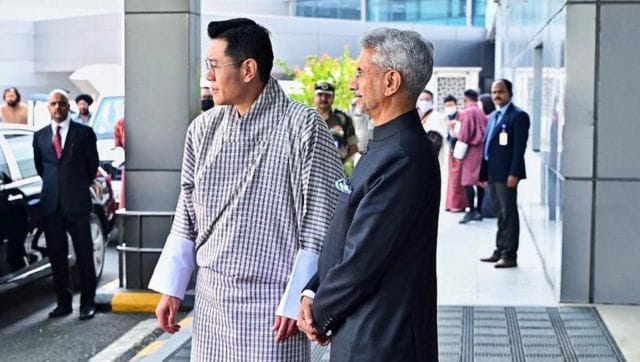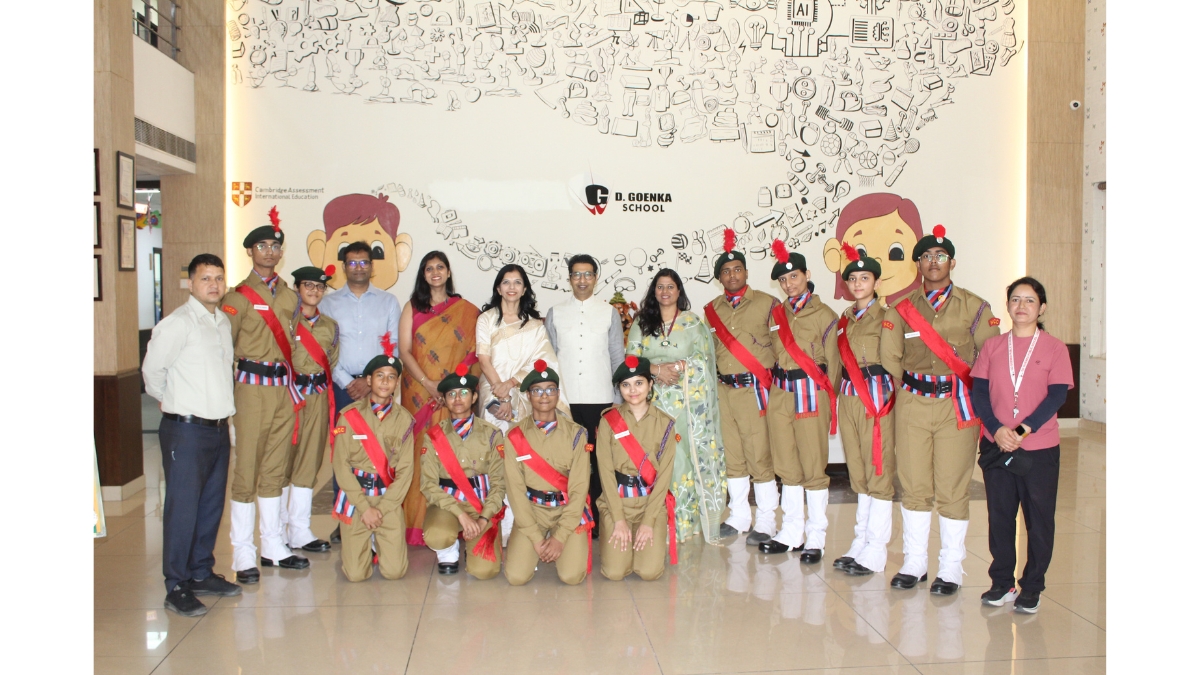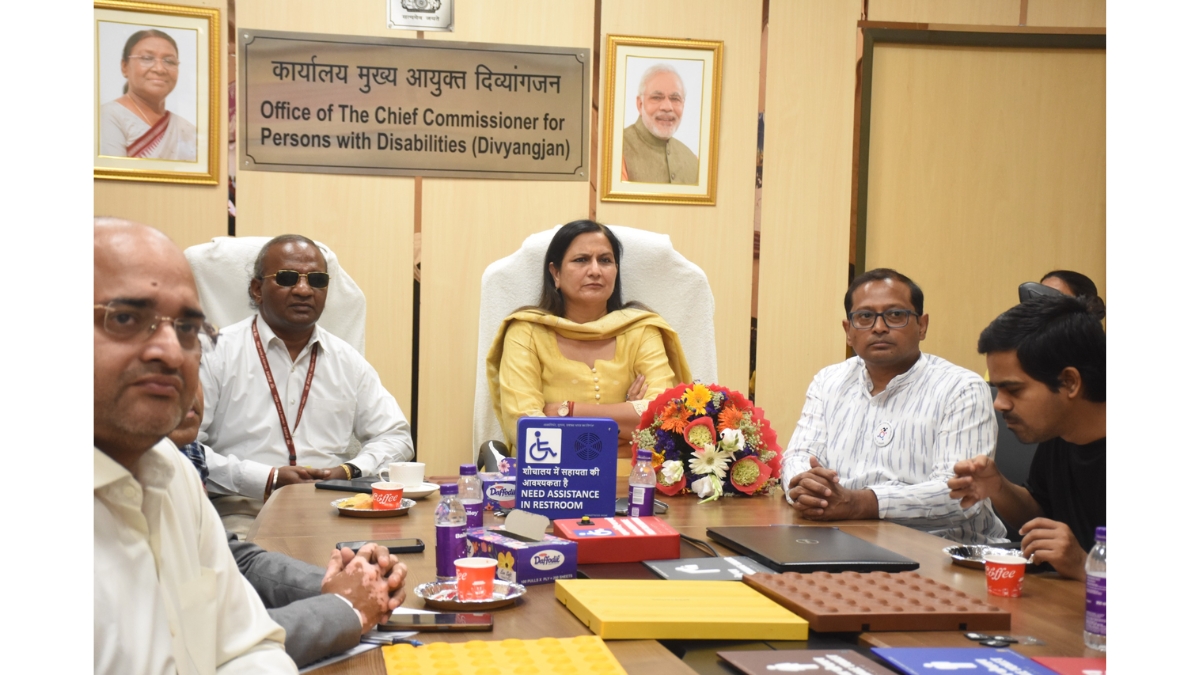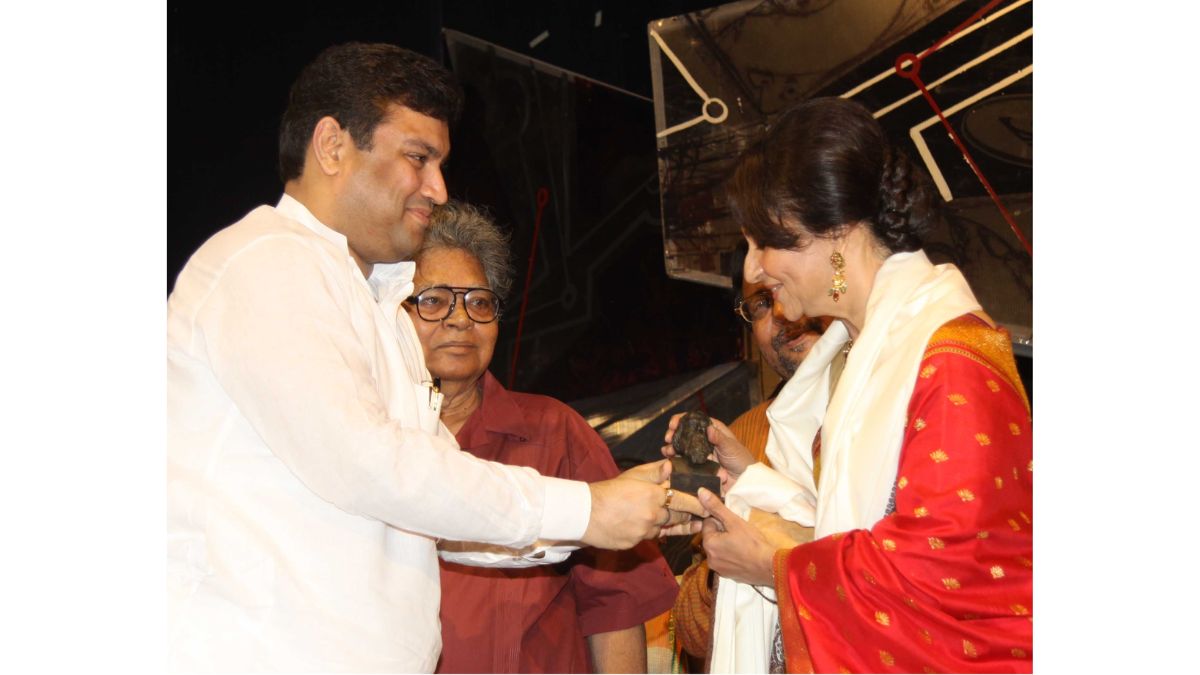After PM Lotay Tshering’s China faux pas, Bhutanese King on three-day India visit

India’s External Affairs Minister S Jaishankar receives Bhutanese King Jigme Khesar Namgyel Wangchuck at the Delhi airport. Twitter/@DrSJaishankar.
New Delhi: Bhutanese King Jigme Khesar Namgyel Wangchuck began his three-day visit to India on Monday. He was received by India’s External Affairs Minister S Jaishankar at the airport in New Delhi.
The King will hold talks with President of India Droupadi Murmu and Indian Prime Minister Narendra Modi on Tuesday.
Jaishankar in a post on Twitter said that the visit of the Bhutanese king will “further strengthen the close and unique India-Bhutan partnership”
Honoured to welcome His Majesty the King of Bhutan, Jigme Khesar Namgyel Wangchuck, on his arrival in India.
His visit will further strengthen the close and unique India-Bhutan partnership. pic.twitter.com/o1lqYYJlVn
— Dr. S. Jaishankar (@DrSJaishankar) April 3, 2023
Wangchuck is accompanied by Bhutan’s foreign minister Tandi Dorji and other senior officials.
Wangchuck’s meeting with PM Modi is being keenly watched as it would be the first such high-level meeting between the two leaders since Bhutan-China boundary talks made rapid progress.
The Bhutanese King met the Indian PM last in September 2022, when he stopped over in Delhi on his way to attend UK Queen Elizabeth II’s funeral.
Warm welcome to India, Your Majesty!
His Majesty the King of Bhutan, Jigme Khesar Namgyel Wangchuck arrived in India a short while ago. His Majesty was received by EAM @DrSJaishankar at the airport. pic.twitter.com/oTFh44LKgS
— Arindam Bagchi (@MEAIndia) April 3, 2023
Bhutan King’s crucial India visit
The visit of Wangchuck comes in the wake of Bhutanese Prime Minister Lotay Tshering’s comments that China has equal say in finding a resolution to the border dispute in Doklam which India believed has been illegally occupied by China.
“It is not up to Bhutan alone to solve the problem,” said Bhutanese PM last month in an interview with the Belgian Daily La Libre.
Tshering’s statement was contradictory with his 2019 remarks to national daily The Hindu, where he said no side should unilaterally act near the existing tri-junction point.
The plateau lies at the tri-junction of India, China and Bhutan and has been a source of tension between the three countries since the 2017 Doklam standoff.
The Doklam plateau is considered an important area for India’s strategic interest.
In 2017, Indian and Chinese troops were involved in a tense standoff in Doklam tri-junction that lasted for 73 days.
The face-off began after China tried to extend road towards Mount Gipmochi and the adjoining Jhampheri ridge. Bhutan claimed that the area of Doklam plateau where China was constructing the road was part of its territory.
The Indian soldiers entered the Doklam plateau to restrict China from illegally constructing the road, saying it would impact its overall security interests.
The Indian Army asserts that letting the Chinese troops to reach Jhampheri would give them a clear line of sight to the Siliguri corridor.
In October 2021, Bhutan and China signed an agreement on a “three-step roadmap” to expedite negotiations to resolve their festering boundary dispute.
Bhutan shares over 400-km-long border with China and the two countries have held over 24 rounds of boundary talks in a bid to resolve the dispute.
India-Bhutan relations
India and Bhutan have special friendship and cooperation which is defined by mutual trust and understanding. The visit of the Bhutanese King will give both the countries a chance to evaluate whole range of bilateral cooperation.
During the Covid pandemic, India was the first country to respond Bhutan’s medical needs and had sent 13 consignments of medical supplies to the nation.
Also, New Delhi was the first to provide Indian-made Covishield vaccines to Bhutan.
India has persistently been Bhutan’s top trading partner and is also the leading source of investments for the country.
India had earmarked $282 million for Bhutan’s development during 2022-23.
Read all the Latest News, Trending News, Cricket News, Bollywood News,
India News and Entertainment News here. Follow us on Facebook, Twitter and Instagram.

Atul Tiwari is a seasoned journalist at Mumbai Times, specializing in city news, culture, and human-interest stories. With a knack for uncovering compelling narratives, Atul brings Mumbai’s vibrant spirit to life through his writing.





